Treatment
PRP Treatment London.
PLASMA RICH PLATELETS (P R P) TREATMENT LONDON
Immerse yourself in the luxurious surroundings of our London Harley Street Clinic, where our skilled practitioner Rupesh, blends science and artistry to deliver excellent prp therapy results that exceed expectations.
Experience the pinnacle of regenerative therapy with Plasma Rich Platelet (PRP) treatment in the heart of London, administered with precision and expertise by Regenlab. Our PRP treatment, utilising cutting-edge technology and the latest advancements in regenerative medicine, offers a non-invasive and natural approach to rejuvenate and revitalise your skin.
Platelet-Rich Plasma (PRP) treatment is a medical procedure that involves using a patient’s own blood to promote healing and stimulate tissue regeneration. Whether you seek facial rejuvenation, hair restoration, or tissue repair, our PRP treatment in our Harley Street Clinic in London harnesses your body’s natural healing potential to enhance your aesthetic and overall well-being. Rupesh a medical professional’s commitment to innovation and excellence ensures that you receive a personalised and effective treatment tailored to your unique needs.
London Lip Clinics, PRP treatment begins with a small amount of blood draw, from which we extract a concentrated solution rich in platelets, growth factors, and other bioactive proteins. This golden elixir is then meticulously applied to the targeted areas, promoting cellular regeneration and stimulating collagen production.
In the context of aesthetic and dermatological applications at our clinic, PRP treatment is often sought for skin rejuvenation and hair restoration. The PRP procedure typically involves the following steps:
- Blood Collection: A small amount of the patient’s blood is drawn, usually from the arm.
- Centrifugation: The blood is then processed in a centrifuge machine to separate the platelet-rich plasma ( white blood cells ) from other components of the blood ( red blood cells ).
- Activation: The concentrated platelets are then activated to release growth factors, which play a crucial role in tissue repair and regeneration.
- Application: The activated PRP is either injected directly into the target area or applied topically on the skin, depending on the specific treatment goals.
What Is Platelet-rich Plasma (PRP)?
Although blood is mainly a liquid (called plasma), it also contains small solid components (red cells, white cells, and platelets). The platelets are best known for their importance in clotting blood. However, platelets also contain hundreds of proteins called growth factors that are very important in the healing of injuries.
PRP is plasma with many more platelets than what is typically found in blood. The concentration of platelets — and, thereby, the concentration of growth factors — can be 5 to 10 times greater (or richer) than usual.
What does PRP do to your face?
PRP uses your body’s regenerative properties to help reproduce healthier, younger-looking skin. With PRP, your blood is drawn and placed into a machine that spins it down into what’s referred to as “liquid gold.” It’s then re-applied to your skin or scalp if you’re being treated for hair loss by injecting small amounts into the desired area.
How many treatments and how often is this therapy needed?
While responses to treatment vary, most people will require 3-4 sessions. Each set of treatments are spaced approximately 4-6 weeks apart. There is no limit to the number of treatments you can have. Your practitioner will determine your treatment protocol according to your skin/scalp condition.
Who is a good candidate for a PRP skin treatment?
If you have visible sun damage at the surface layers of your skin, such as age spots, sun spots, or other issues, PRP treatment can even out your complexion. This procedure is also ideal for people with wrinkles, acne scarring, and uneven skin tone, among other skin complaints.
Benefits of PRP ‘Vampire Facial’?
PRP LONDON FOR SKIN REJUVENATION
Natural ageing of the skin means that skin texture and appearance deteriorate over time. An exciting new approach appealing to people seeking a more natural method to facial rejuvenation.
RegenLab PRP is being used successfully with thousands of patients across the globe to rejuvenate and slow down the ageing process.
PRP treatment is suitable for:
- Around the eye area
- Cheeks and mid-face
- Jaw line
- Thinning skin on the neck
- Back of hands
- Décolletage
- Other areas such as knees, elbows upper arms.
PRP London treats the following skin concerns
- Tired and dry skin, laxity of skin, uneven pigmentation
- Signs of skin ageing
- Fine lines and wrinkles
- Overall texture and tone improvement
- People who may experience risk of allergic reactions from other treatments
- People looking for a natural treatment using the body’s own healing process
Results of PRP London treatment
- Improved skin colour, elasticity, tone and thickness.
- Remodelling of the collagen fibres for improved tone.
- Long-term smoothing of skin tissue and texture.
- Faster healing following aesthetic treatments e.g. laser skin treatment and dermal needling.
PRP LONDON
PRP LONDON FOR HAIR LOSS
PRP Best PRP treatment London concentrates natural growth factors found in your blood to help stimulate hair follicles for thicker healthier hair.
RegenLab PRP is suitable for men and women suffering certain types of alopecia or general hair thinning, looking to prevent more hair loss and those not interested in surgery. It is ideal to start treatment at first sign of hair loss and thinning.
The PRP Procedure
Blood is collected from you in 1-2 specially designed tubes which are then centrifuged for 5-10 minutes. During centrifugation, a patented gel within the tubes isolates PRP from other unrequired cells within the blood.
RegenLab PRP is then ready for application by injecting back into the scalp.
By activating follicular progenitor cells (adult stem cells) the application of PRP causes weak hair follicles to become healthier and larger, producing more robust hair growth.
New hair growth can be seen as early as 2 months, but is typically evident between 5-8 months and will continue to improve up to a year after treatment.
Results of PRP treatment
- Stimulation of hair follicles
- Increased hair growth
- Thicker healthier hair
Prp treatment is also used for sports injuries for sports medicine. The injection site is usually the injury site. Tennis elbow, knee osteoarthritis, tendon injuries, muscle injuries are some of the conditions that platelet-rich plasma injections deliver high concentration of platelets and hyaluronic acid to professional athletes for wound healing. A lot of Sports people like to have Laser Hair Removal Treatment.
PRP hair treatment in London has become a popular solution for those looking to combat hair thinning and promote regrowth. PRP, or Platelet-Rich Plasma, involves using a patient’s own blood to stimulate hair follicles and encourage healthier, thicker hair. The price for PRP hair treatment London can vary depending on the clinic and the number of sessions required, typically ranging between £300 to £800 per session.




